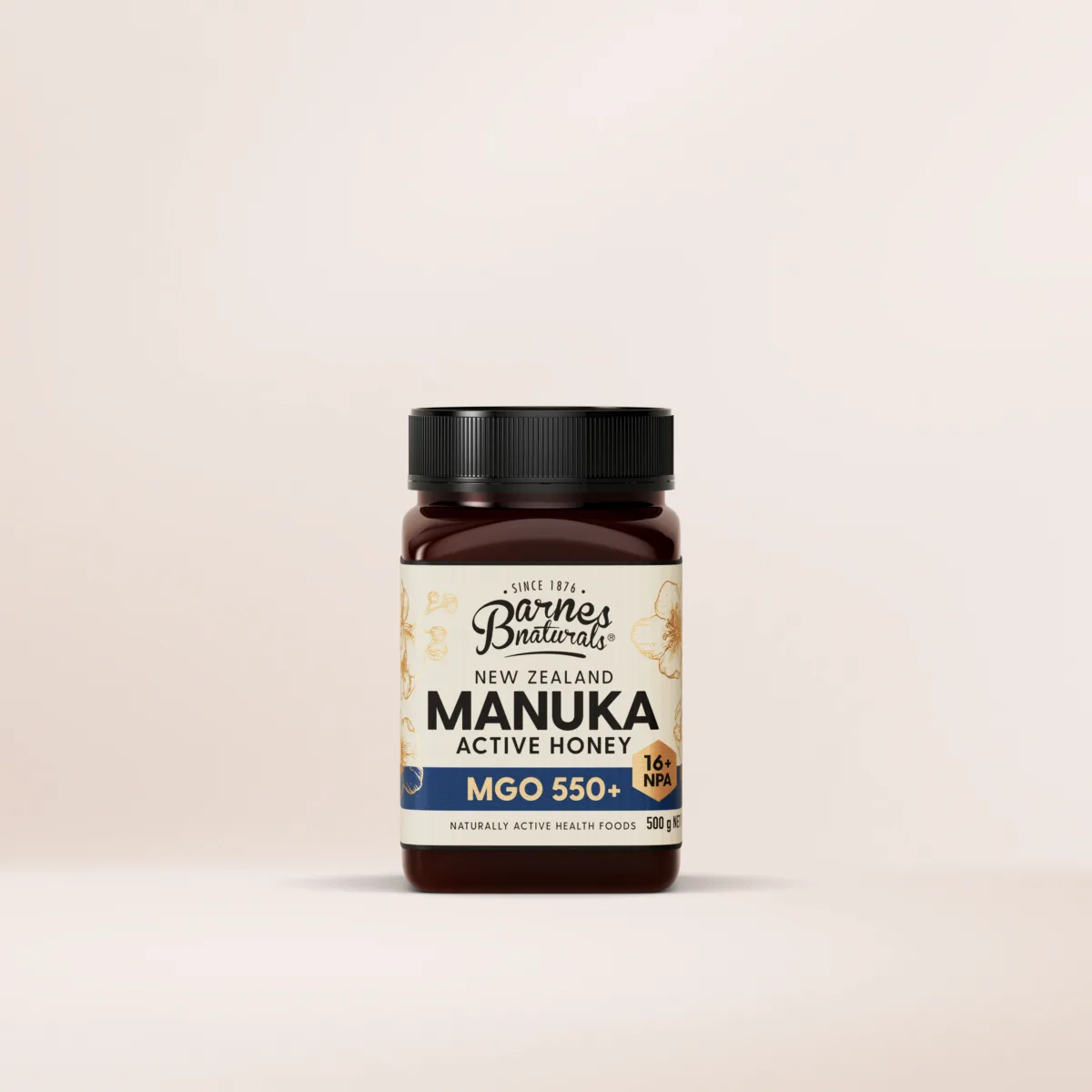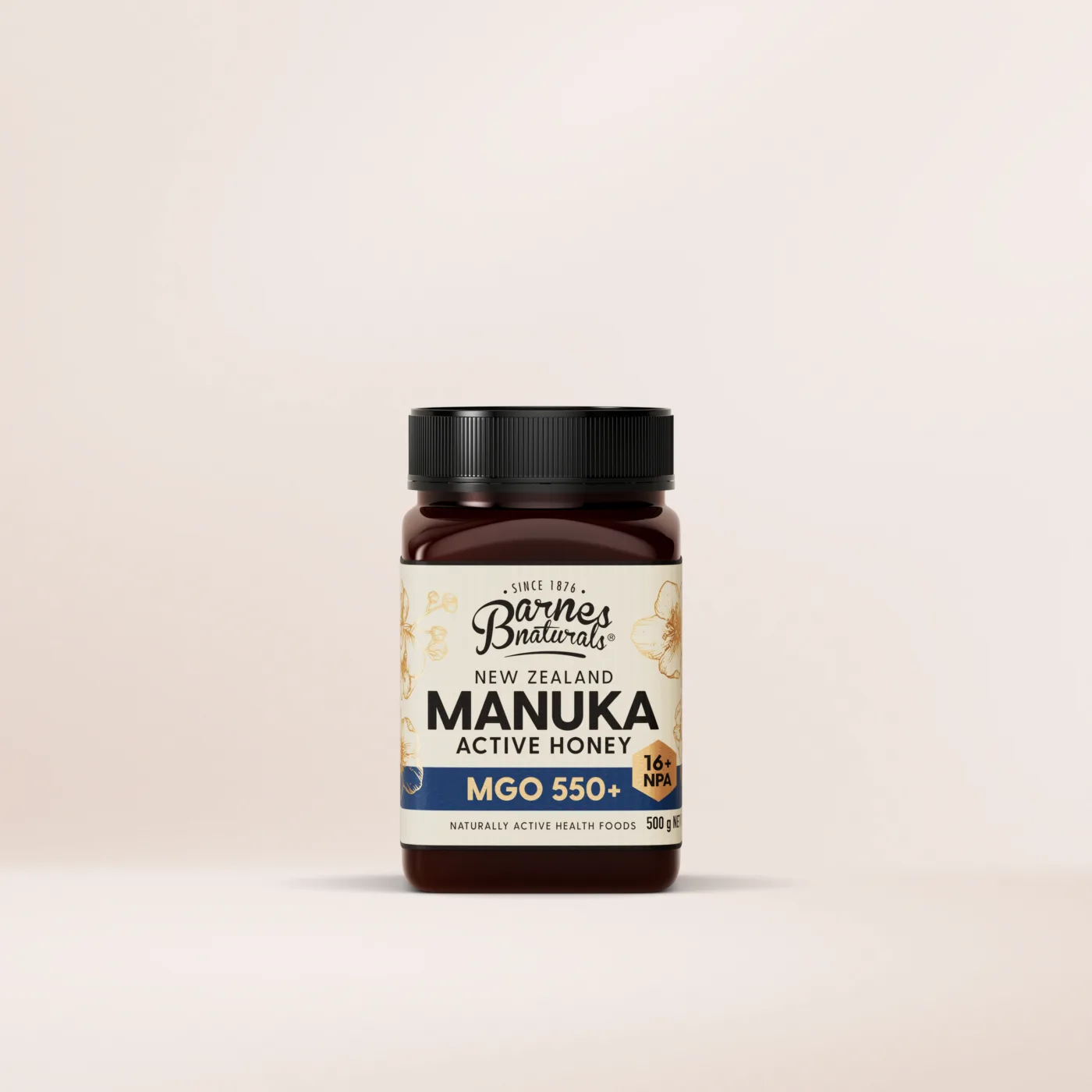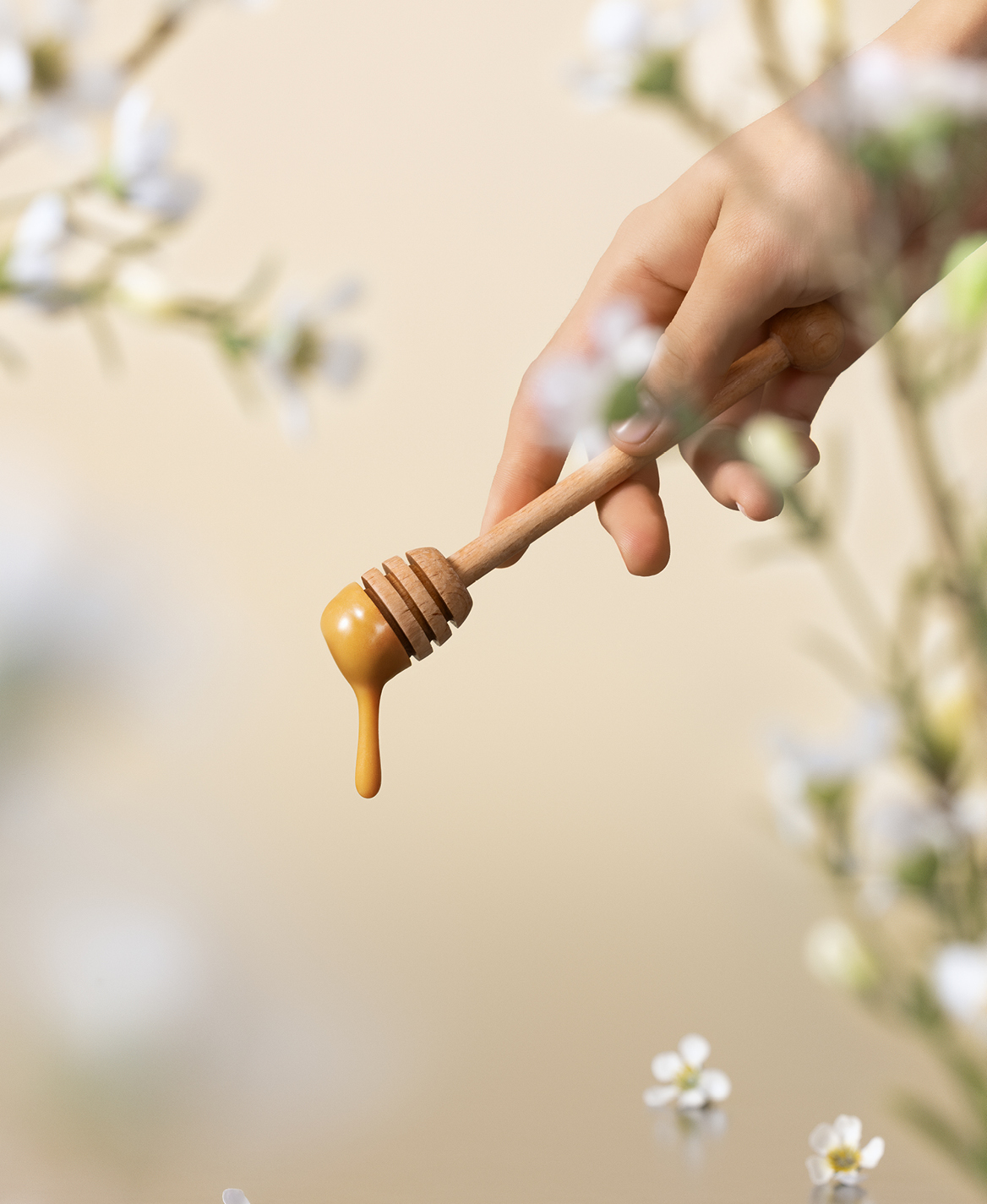MGO 550+




High Strength
With high MGO levels, we recommend our high strength MGO 550+ premium Manuka honey for more targeted use. It’s ideal for having on hand during the cooler months. Manuka honey is a bioactive superfood that brings both flavour and functionality to your everyday routine. More than just honey, this premium Manuka honey contains naturally occurring methylglyoxal (MGO), a key compound researched for its antibacterial, anti-inflammatory, skincare, and wound-healing properties 2, 3. The higher the MGO number, the higher the concentration of methylglyoxal per gram of Manuka honey.
Pure New Zealand Manuka Honey MGO 550+ (550 mg/kg Methylglyoxal). Keep in a cool, dry place below 25 °C to preserve its natural goodness.
Once you’ve enjoyed every last spoonful, please recycle both the lid and jar by placing them in your home recycling bin.

Take straight from the spoon or add to warm drinks, smoothies or other recipes in replacement of sugar for an added bioactive boost.
Blend with natural ingredients like warming spices, ginger, or lemon to create soothing, flavourful remedies.
Apply directly to your skin or mix with other nourishing ingredients like oatmeal for a rejuvenating face mask or spot treatment.







